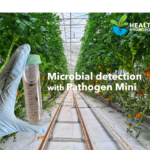What is Pectobacterium carotovorum?
Pectobacterium carotovorum is one pathogen, of many, that causes soft rot in plants. It is a Gram-negative, rod-shaped, facultative anaerobe [1], (Figure 1). This bacteria is part of the order Enterobacterales [2] which includes other well-known bacteria such as Escherichia coli, Klebsiella pneumoniae and Salmonella, to name a few. Soft rot is a devastating and costly disease, causing a loss of approximately 46 million euros in the European potato industry, each year [3]. Although potatoes are the most common targets of Pectobacterium soft rot, other plant species, including hydroponically grown plants can become infected: banana, cabbage, capsicum, carrot, celery, lettuce (Figure 2), potato, spinach, cucurbits, and tomato. Host plants specific for P. carotovorum are summarized in Table 1.
Facultative anaerobe – bacteria which can grow with or without oxygen
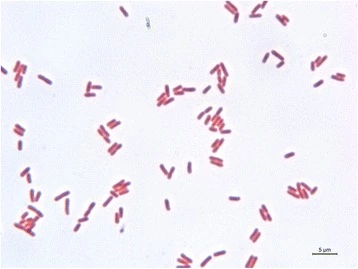
In addition to causing soft rot in a variety of plants, the genus Pectobacterium can cause other diseases depending on the host, including blackleg in potatoes, bleeding canker in pears and foot rot in rice [4]. However, the species P. carotovorum does not cause disease other than soft rot.
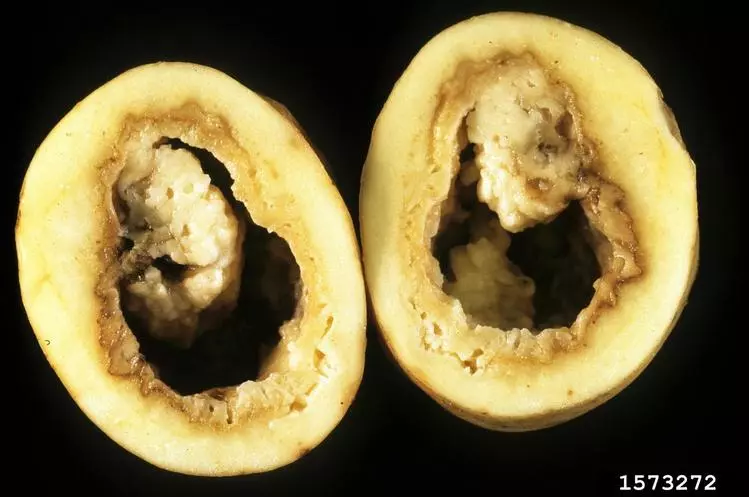
Table 1. A list of host plants for Pectobacterium carotovorum and their common name
|
Taxonomic Identification |
Common Name |
|
Abelmoschus esculentus |
Okra |
|
Artemisia absinthium |
Wormwood |
|
Brassica oleracea |
Cabbage |
|
Cichorium intybus |
Chicory |
|
Citrullus lanatus |
Watermelon |
|
Cucumis sativus |
Cucumber |
|
Cynara cardunculus |
Cardoon/artichoke thistle |
|
Chamaecereus silvestrii |
Cactus |
|
Fritillaria imperialis |
Crown Imperial |
|
Haworthia |
Succulent |
|
Ipomoea batatas |
Sweet potato vine |
|
Kalanchoe tubiflora |
Succulent |
|
Lactuca sativa |
Lettuce |
|
Opuntia spp. |
Prickly pear cactus |
|
Orostachys spp. |
Succulent |
|
Papaver somniferum |
Poppy |
|
Peperomia spp. |
Peperomia |
|
Plectranthus australis |
Swedish Ivy |
|
Pilea cadierei |
Aluminum plant |
|
Pinellia ternata |
Cow dipper |
|
Rheum rhabarbarum |
Rhubarb |
|
Silybum marianum |
Thistle |
|
Saintpaulia ionantha |
African Violet |
|
Solanum sp. |
Potato, tomato, eggplant |
|
Spathiphyllum wallisii |
Peace lily |
|
Typhonium giganteum |
Voodoo lily |
The information in this table is adapted from Charkowski, 2018.
Soft rot can also be caused by other species of Pectobacterium and species of the genus Dickeya. Both Pectobacterium and Dickeya genera were originally referred to as Erwinia but over the last 20 years and taxonomic changes, they were denoted as two individual separate genera, with numerous species [4].
We provide great overviews of many agricultural microorganisms. Subscribe to stay updated!
Infection and Symptoms:
Pectobacterium carotovorum is an environmental bacteria. P. carotovorum is typically an issue for farmers and growers when it colonizes irrigation water or in the case of hydroponic systems, the source of water and plumbing used for the aqueous growth solution. On some surfaces, P. carotovorum can form biofilms [5] which makes it even more difficult to eradicate from plumbing lines.
Pectobacterium causes soft rot by targeting the leaves and the stems of plants. The disease appears as a “water-soaked”, large, brown, slimy spot (Figure 3). The rotting will start from the outside layers of the plant and work its way in. Infection usually starts from a wound, or a break in plant tissue, which can be on the roots, stem, leaves or fruiting body.
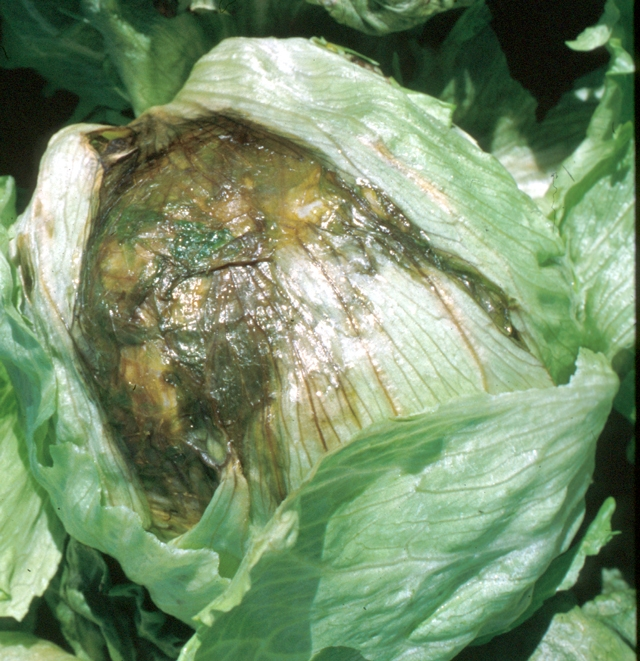
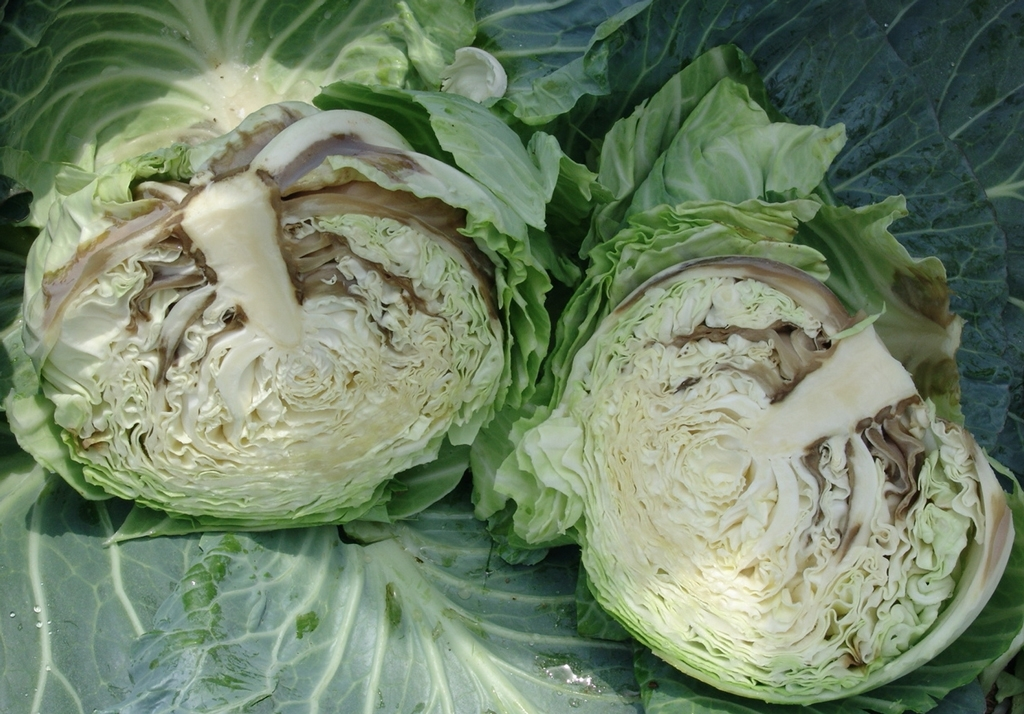
Growth Conditions:
Pectobacterium carotovorum is a soilborne pathogen with an optimal growth range of 20 to 25°C. However, due to its biochemical properties, it can also grow at 37˚C and in high salt concentrations of 5% NaCl [1]. Additionally, this bacteria thrives in wet and humid conditions. This pathogen’s tolerances to high temperatures and salt thresholds, along with the preference for damp conditions can make it difficult to control in hydroponic systems.
Preventing Pectobacterium carotovorum infection:
Due to the ubiquity of this pathogen, it is hard to avoid entirely but steps can be made to reduce the likelihood and severity of infection:
- Use clean and properly disinfected tools to avoid introducing the pathogen to the plants.
- Avoid pooling water, especially in contact with plants to prevent contamination and the likelihood of infection.
- Ensure there is proper air circulation and dehumidification to reduce the prevalence of the pathogen if present in the environment.
Although Pectobacterium species are mostly found in soil, they can hitch a ride on infected and imported tools, as well as seeds.
Controlling Pectobacterium carotovorum infection
Unfortunately, once crops start displaying symptoms of soft rot, there is no cure for the disease. However, biocontrol methods using phages have shown promising effects at controlling and preventing diseases caused by Pectobacterium and Dickeya before they start [6].
Phages – also known as bacteriophages, are viruses which specifically target bacterial cells.
Since many different pathogens cause soft rot disease, it is necessary to identify the cause of disease in a lab. Unfortunately, if you have a confirmed Pectobacterium infection causing soft rot in your plants, you need to properly dispose of the infected crops. It is also recommended that you properly disinfect the area and anything that was in contact with the infected crops.
The good news is, that Pectobacterium carotovorum is one of the bacterial species that we can detect using Pathogen+, a microbial surveillance service. Contact us at [email protected] to get started or to learn more about which program will best suit your needs.
Disclaimer:
The information we present in Pathogen Profile is based on collating published peer-reviewed scientific literature and sources we think are reliable. This is by no means an exhaustive review of pathogens. Pathogen Profile gives a small glimpse of what is known about pathogens and we encourage growers to do more research on their own based on the pathogens in relation to their own crops and hydroponic systems. The information presented in Pathogen Profile is for educational purposes and should not be used as professional advice to treat pathogens or to operate your hydroponic system.
Works Cited
- Bosmans, L., Moerkens, R., Wittemans, L., De Mot, R., Rediers, H. and Lievens, B. (2017), Rhizogenic agrobacteria in hydroponic crops: epidemics, diagnostics and control. Plant Pathol, 66: 1043-1053. https://doi.org/10.1111/ppa.12687
- Conn, H.J. Validity of the genus Alcaligenes. J Bacteriol 44:353–360; 1942 doi: 10.1128/jb.44.3.353-360.1942
- Veena, V., Taylor, C.G. Agrobacterium rhizogenes: recent developments and promising applications. In Vitro Cell.Dev.Biol.-Plant 43, 383–403 (2007). https://doi.org/10.1007/s11627-007-9096-8
- Yasybaeva G, Vershinina Z, Kuluev B, Mikhaylova E, Baymiev A, Chemeris A 2017 Biolistic-mediated plasmid-free transformation for induction of hairy roots in tobacco plants. Plant Root 11:33-39. doi:10.3117/plantroot.11.33 Copyrights 2017, Plant Root (JSRR), www.plantroot.org (https://www.cabdirect.org/cabdirect/abstract/20183132574)
- Brenner, DJ., Krieg, NR., Staley, JT,. “Bergey’s Manual of Systematic Bacteriology: The Proteobacteria Part C”. Vol.2. Springer. 2005. 340-345.
- Weller SA, Stead DE, Young JPW, 2006. Recurrent outbreaks of root mat in cucumber and tomato are associated with a monomorphic, cucumopine, Ri-plasmid harboured by various Alphaproteobacteria. FEMS Microbiology Letters 258, 136– 43. https://doi.org/10.1111/j.1574-6968.2006.00214.x
- John R. Porter Ph.D. & Hector Flores Ph.D. (1991) Host range and implications of plant infection by Agrobacterium rhizogenes, Critical Reviews in Plant Sciences,10:4, 387-421, DOI: 10.1080/07352689109382318
- Dannehl, D., Suhl, J., Ulrichs, C., y Schmidt, U. (2015). Evaluation of substitutes for rock wool as growing substrate for hydroponic tomato production. Journal of Applied Botany and Food Quality, 88(1). DOI:10.5073/JABFQ.2015.088.010
- Gutierrez-Valdes N, Häkkinen ST, Lemasson C, Guillet M, Oksman-Caldentey K-M, Ritala A and Cardon F (2020) Hairy Root Cultures—A Versatile Tool With Multiple Applications. Front. Plant Sci. 11:33. DOI: 10.3389/fpls.2020.00033
- Suresh, B.; Ravishankar, G.A. Phytoremediation—a novel and promising approach for environmental clean-up. Crit Rev Biotechnol 24:97–124; 2004. DOI: 10.1080/07388550490493627
Looking for more useful info? Go back to the Blog Page or check out the Resources Page.
![]()
Becky Anderson is a Lab expert and Science Communicator at Healthy Hydroponics


